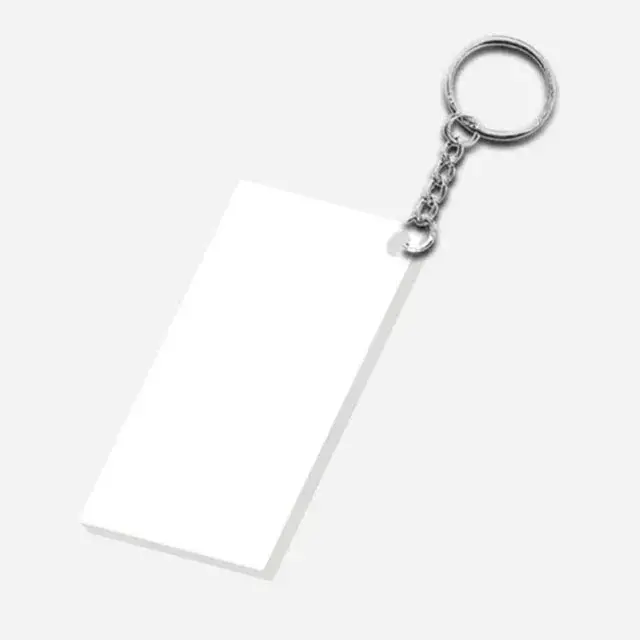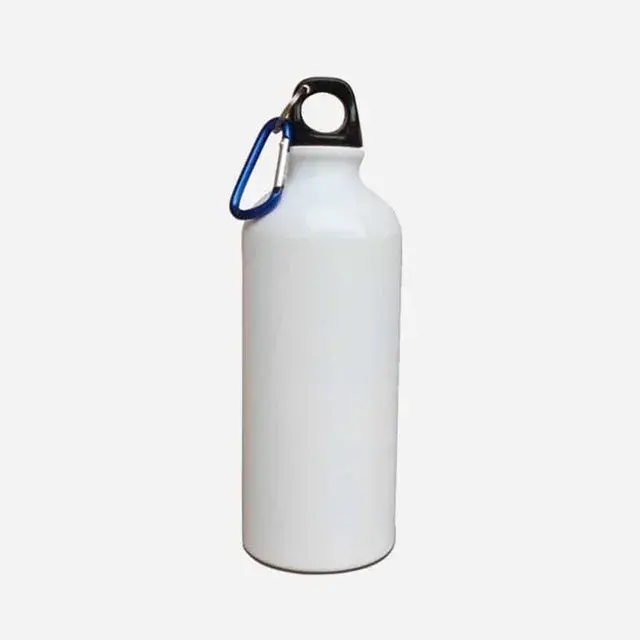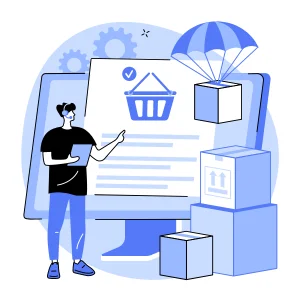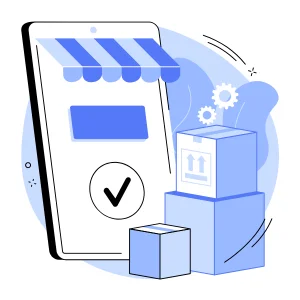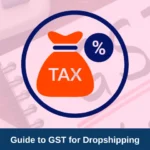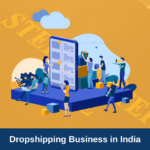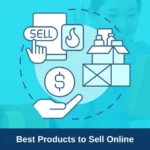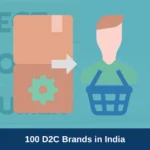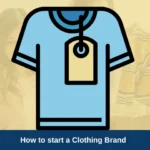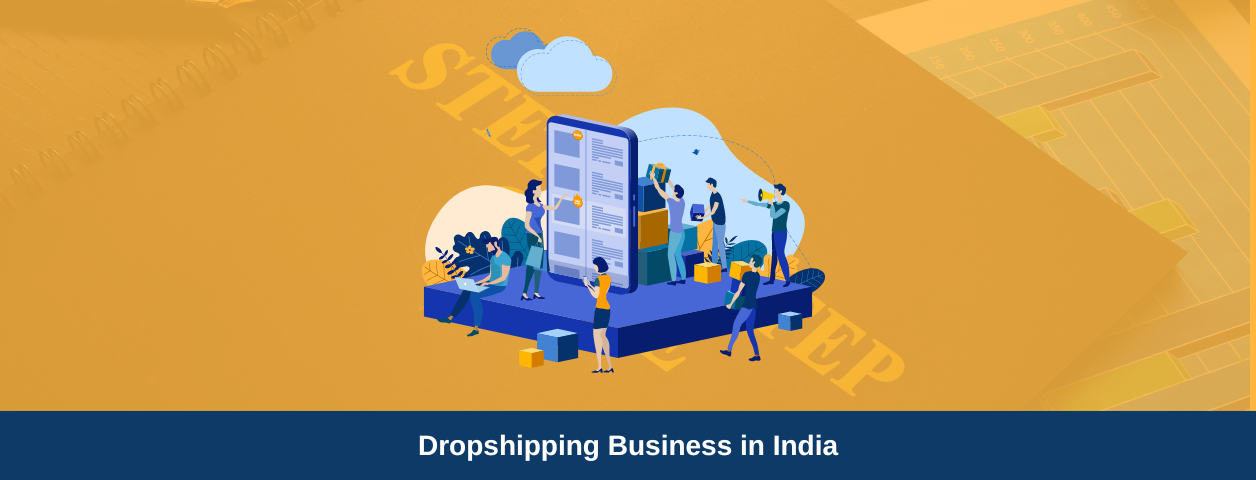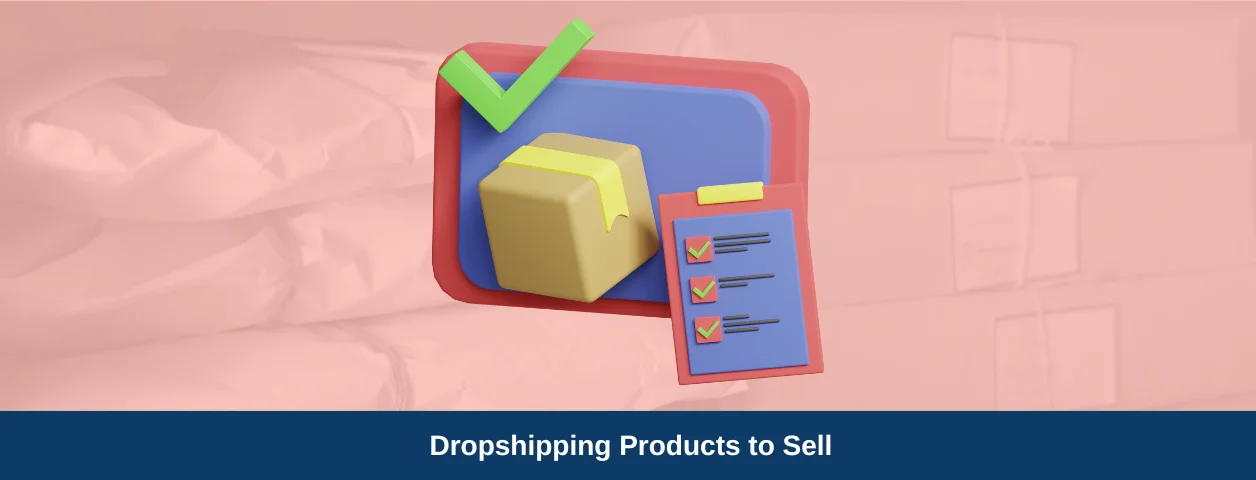Return to origin (RTO), damage in transit, undelivered, etc., is the biggest challenge in any online business delivering products as it directly affects the revenue and profits.
Shipping is the most crucial part of any business. After all your efforts, from product listing to marketing, if the order is not delivered to your customer as expected, all your time and efforts are wasted.
All your efforts will be unsuccessful if the end product is delivered broken or damaged, lost in transit, or returned to its origin.
The world is changing online, and new businesses are launching every day. With the number of online orders increasing, the shipping industry is saturated with orders, and getting your orders delivered to your customers is a challenge.
The main issue with selling products online is that the buyer cannot view or check the product in person. That is why it is not unexpected that 30% of all products ordered online are returned, compared to only 8.89% of products purchased in brick-and-mortar stores.
You must include the Return to Origin (RTO) rate before determining your income and ROI.
This article will discuss return to origin and how to solve it.
Let’s go!
Return to origin meaning (with example)
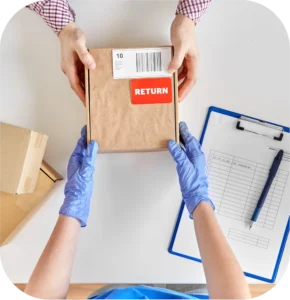
Return to origin means that the courier returns the order to the seller’s address instead of delivering it to the customer due to an issue. In such cases, the courier company ships the product back to the address from where they originally picked up the order.
The Indian e-commerce industry is booming and will grow by 84% by 2024.
Around 70% of the Indian market prefers Cash on delivery (COD) over online payment, which adds a significant cost burden on eCommerce businesses as they lose money with back-and-forth shipping.
What is RTO in courier?
RTOs, according to Gurugram-based supply and logistics firm Delhivery, harm the profitability of D2C firms: “Greater RTO affects a brand’s unit economics in three ways: income lost from the order, money spent on client acquisition fees, and money spent on logistics. Also, in-transit items may be damaged, reducing their resale ability.”
Now that we know what a return to origin (RTO) is, let’s see what causes RTOs.
What are the reasons for RTO- return to origin?
Understanding the cause of RTO is crucial for every E-commerce brand. There will be returns, but understanding the causes of RTO helps prevent online businesses from losing revenue and profits.
1. Invalid/Incorrect delivery address

An incorrect address is one of the biggest causes of RTO, resulting in company loss.
The courier company can regard an address as faulty or incorrect for various reasons like incomplete address, wrong street or area, incorrect pin code, etc.
2. Invalid user

When the delivery person attempts to contact the customer, they cannot do so. In this situation, the courier company returns the order to the vendor and marks the customer as an invalid user.
3. Customer not available at the door
The consumer needs to be accessible to accept the order on the day of delivery. If not, someone else must be present at the specified address.
But, if the customer is not available both physically and over the phone, the delivery person returns the product and labels it “customer not available,” resulting in an RTO.
4. The intention of the client
Understanding why clients refuse to accept the order delivery is always helpful. The success or failure of an E-commerce shop is primarily determined by how people react to their products. Customers may also reject orders at the doorstep due to the following:
- Consumers make last-minute changes to their plans.
- Consumers bought the same thing from another brand, which supplied it faster and at a lesser price. They accept an older product delivered by another company while rejecting the new one at the door.
- Consumers no longer require the product after buying and do not cancel the purchase because it is too time-consuming or they are uninformed of the cancellation process.
- Consumers will reject orders if they notice shabby or untidy packing and believe the goods inside are damaged or of poor quality, resulting in RTO.
5. Order fraudulent

- A scammer orders an item using another person’s debit/credit card, and the original cardholder demands a chargeback through their bank.
- An instance is when a consumer requests a chargeback due to dissatisfaction with the received product or the delivery being late. It leads to RTO.
- When competitors or bad actors place fake orders to deplete an online store’s inventory, the order is placed and dispatched, but because it is a sham order, the fraudster rejects/declines it. It results in RTO and a financial loss because online merchants pay extra for reverse logistics.
6. An incorrect product delivery
Customers may return items if it is of the incorrect size, color, or style. Alternatively, the website may advertise an item incorrectly, and this can cause it to be delivered differently from what customers expected.
Even if it wasn’t the seller’s fault, they might be liable for the returned order. Before completing the return, check with the consumer to discover if they want an exchange or a refund.
Yet, by lowering returns due to quality faults, you may reclaim up to 20% of lost income.
8. Delivery agent fake delivery attempt
A false delivery is when the delivery agent does not attempt to deliver the order but changes the delivery status to unsuccessful through an NDR notice. They are exceedingly bothersome.

How does RTO affect online businesses?
A growing business has to bear the expenses of logistics and order processing, but the most significant impact comes when a product is returned to them, resulting in additional charges.
RTOs can strip a company clean in the following ways:
1. Forward and reverse logistics costs
The seller is responsible for both forward and reverse logistics costs. We must consider two instances: one where the vendor ships the item and the other where the product returns to the shipper.
2. Inventory that has been blocked or stuck
When a consumer places an online order for a product, that item is blocked. And a product is blocked from when the customer orders until it is returned to inventory by the seller.
Therefore, even after returning to the inventory, it stays in the stock if no one orders the same goods.
3. Order processing operational costs
For each order placed, an online firm must incur operations costs such as packing, quality testing, labor expenditures, etc.
4. Forward and reverse logistics costs
The seller is responsible for both forward and reverse logistics costs. We need to consider two instances: one where the vendor ships the item and the other where the courier company returns the order to the seller.
5. Repackaging & Quality checks
When a customer orders an RTO product, the seller must redo the entire order processing procedure, including repacking it, doing quality checks, contacting logistics, etc.
6. Increased damage probability
If the returned item remains in the inventory or warehouse for an extended period, the likelihood of harm increases as its lifetime declines.
7. Bad customer service
As if fear weren’t enough to turn customers off from the delivery experience, slow responses to NDR might result in the order not being delivered. Customers will repeatedly identify the inability to pay with your brand identity.
How to reduce RTO orders?
While the average eCommerce return rate for all transactions is 20%, it climbs to 40% for COD (cash on delivery) orders. On average, the seller will receive four returned COD orders for every ten orders.
It is evident that the smaller your RTO, the greater your business return. That is why it is critical to take constant action to lower ROI as much as feasible. Here are a few possibilities:
A. Reduced e-commerce returns
The most excellent method to reduce RTO is to eliminate the possibility of any return. You can begin by enhancing product quality.
- Increase the number of high-resolution photographs on the product page, incorporate extensive product descriptions, and offer dynamic sizing charts. It guarantees customers understand their purchase and have appropriate expectations when the order is delivered.
- It would be best to emphasize order accuracy to ensure that the right product reaches your customer and is in excellent condition.
- Adding consumer reviews on the product page that offer a thorough overview of the quality and usage of the product
- Providing customer service through chatbots, email addresses, and phone numbers so that consumers may resolve their issues
B. Provide a variety of payment options
Customers who refuse to pay for their orders raise the economic effect of RTO on an online firm. You will have to bear the cost of return postage. To avoid it, you must be:
- Offering a variety of payment options such as debit cards, credit cards, UPI, digital wallets, and others
- You can provide discounts for digital payments.

C. Provide order tracking
Customers will occasionally place an order for a special occasion or event. If the order comes after the event, the customer may no longer require it. Apart from assuring lightning-fast shipment, it would help if you thought about the following:
- Giving your customer an estimated delivery date so that they may plan their purchase delivery
- Provide real-time order tracking and order updates to your customers; you can instill confidence in them that their orders will arrive on time.
- Notifying your consumers in advance of a delay
D. Verify customer availability and information
Failed delivery attempts result in RTO, which incurs additional expenses owing to rescheduling and alerting the Client. What you should be doing is as follows:
- Create automated messages or calls to contact your consumers and collect vital information, such as assuring customer availability and validating the entire customer address.
- Automate the verification process and allow your customers to request another delivery attempt or modify the delivery location on the customer portal
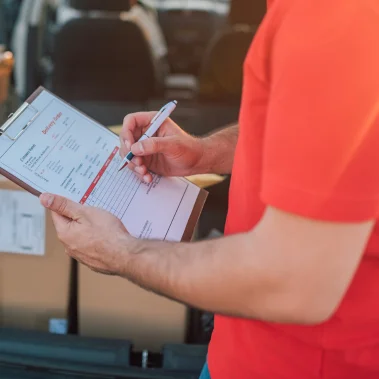
whenever they want, without needing help from the customer support team.
- Simplifying returns, exchanges, and order cancellations so customers can do the necessary tasks on the customer portal without trouble or creating RTO.
E. Create a return policy
A return policy assists you in managing how you handle returns and exchanges. Establish a policy defining customer expectations so they know what they may return or exchange and when.
If your policy is clear, customers will be less likely to feel uneasy or upset. Consumers will follow a procedure if they are aware of the regulations before making a purchase.

F. Provide customer service

As a result, you may give better product information and lower return rates caused by the customer’s lack of product knowledge.
You may build a personalized chatbot that answers customers’ frequent questions about your products and gives them the information they need to decide whether or not to buy.
Use WhatsApp chatbot that can answer your clients’ inquiries about your products.
Also, your agents may clear up any doubts regarding the product, which will develop confidence in the consumer. Chatbots allow you to automate commonly requested queries, such as
Where is my order?
What is your return policy?
Furthermore, it can gather additional information about the customer’s issues and preferences. It also helps collect the knowledge to help you make informed decisions about your products.
G. Determine who your most valuable customers are
By combining RTO and CRM data in an end-to-end marketing analytics solution, you can discover consumers with the lowest RTO rates and target them individually with special offers and incentives to raise their CLTV.
You may also find clients with the highest RTO rates to learn their significant concerns and difficulties with your goods.

H. Distribute your inventory throughout India
With warehouses all around India, you may accelerate order delivery and RTO. It will assist you in optimizing reverse logistics, i.e., fast refilling returned products in available inventory and making them resellable. Here’s what you need to do:
Investing in a spread network of warehouses across India or outsourcing e-commerce fulfillment to a fulfillment business such as Shiprocket’s Warehouse to use their fulfillment centers.
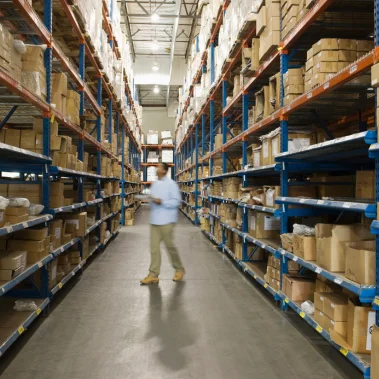
I. Blocklisting fraudulent customers
- Purchase a fraud-prevention software that assists you in detecting fraudulent behavior and raising red flags.
- Conducting a quality control check at the customer’s door
- OTP (one-time-password) is sent to the customer to ensure the delivery of high-value orders.
- When you sell on marketplaces, and the returned items do not pass the quality check, make a claim.

J. Convert refunds into exchanges
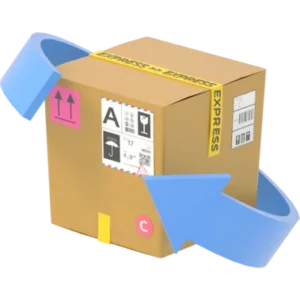
- Encourage customers to purchase another product by providing color, size, and style recommendations when they return an order.
- Offering your customers the option of receiving their refund in their shop wallet so that they can purchase anything else in the future
- Providing instant reimbursements for wallets, as opposed to source accounts, which take 5-7 business days
Conclusion
RTO loss is a severe concern for D2C businesses but is fixable. The goal is to understand the RTO loss landscape and then handle it proactively.
You may keep RTO losses to a bare minimum with the right solution. It will assist you in improving your company’s bottom line and ensuring healthy growth in the following years.
There is, without a doubt, no foolproof strategy to eliminate returns. But, sellers must have a comprehensive process to handle returns most suitably.
Customers are willing to return things because of the ease and comfort of online purchasing and the relative absence of risk.
Collaborating with a professional logistics business like Nimbuspost, Shiprocket, or Shipease may dramatically transform how you send a product from one location to another. It helps you to handle the issue and decrease substantially RTO in eCommerce successfully.
Read more
1. Top 10 Custom T-Shirt Ideas for Your Print-on-Demand Store
2. Starting a Print-on-Demand Custom T-Shirt Store
3. The Ultimate Guide to Starting Your Custom T-Shirt Business with Dropshipping
4. Custom Full Sleeve T-Shirts: From Design to Delivery in Print-On-Demand
5. Marketing Strategies for Selling Logo T-Shirts in Your Dropshipping Store
Frequently Asked Questions
What does Return to origin mean?
“Product return” is a common term in online business. Courier companies assign the RTO status (Return to Origin) to returned products due to failed delivery.
RTO orders were not delivered to the destination address for any reason and were returned to the seller.
What are the costs associated with an RTO order?
Understanding how to reduce RTO in e-commerce is essential for being profitable.
These RTO-related expenses might hurt your company’s bottom line:
Shipping costs: Returning things costs money. If your company provides free shipping, you include the cost of shipping in the overall price of the goods. Nevertheless, if a buyer returns the product, you will be responsible for the reverse shipping costs.
Expenses of repackaging: Items are shipped in customized boxes with packing slips and postage. When consumers return such packages, they must be unpacked and restocked. Workers must then repackage them before sending them to a new customer.
Damaged products: When customers return items, they may pass through several warehouses and be delivered alongside many other things. During this procedure, certain items can get damaged.
Handling and operational fees: If a product lies on a shelf, it is not generating revenue for your organization. And if it eventually ships only to be returned, your company will lose money.
Expiration: Certain items might not endure permanently. Some are only valuable at particular seasons. Shipping a product that goes missing, found after its expiration date, will leave you with an unsellable product.
How to reduce RTO orders?
Here are 11 key ways to reduce RTO orders for your e-commerce stores:
- Reduced e-commerce returns
- Provide a variety of payment options
- Provide order tracking
- Verify customer availability and information.
- Create a return policy
- Provide customer service
- Determine who your most valuable customers are.
- Distribute your inventory throughout India.
- Blocklisting fraudulent customers
- Convert refunds into exchanges
What is the "Return to Origin (RTO)" concept in online businesses?
When a package is returned to the seller’s address instead of being delivered to the customer due to an issue, it is known as “Return to Origin (RTO).” It can significantly impact the revenue and profits of online businesses.
Can you explain the process and logistics involved in "Return to Origin (RTO)" for online retailers?
Suppose there are issues with the delivery address, user information, customer availability, or fraudulent orders. In that case, the courier company may initiate the “Return to Origin (RTO)” process, which involves shipping the product back to the address where the order was initially picked up.
What are the primary reasons for online retailers to initiate "Return to Origin (RTO)" for their products?
Online retailers’ most common reasons for initiating “Return to Origin (RTO)” include incorrect or invalid delivery addresses, invalid user information, customer unavailability, fraudulent orders, and client intention.
How does "Return to Origin (RTO)" affect online businesses' operational efficiency, especially in inventory management?
“Return to Origin (RTO)” can significantly impact online businesses’ operational efficiency, particularly in inventory management. It can increase return rates, product damage, and additional logistics costs.
What financial implications does "Return to Origin (RTO)" have on online businesses, and how do they mitigate these costs?
“Return to Origin (RTO)” can have financial implications for online businesses, including lost income, client acquisition fees, and logistics expenses. To mitigate these costs, companies can improve delivery information accuracy, provide quality products, and use reliable courier services.
With over 6+ years of experience in the industry, Ayushi excels in building strong customer relationships and guiding clients toward growth as a Brand Partnership Manager. She enjoys sharing her experience in her content.














